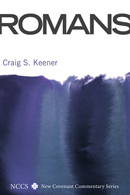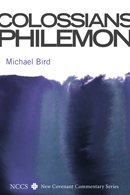I put up the following post last year on December 15th. I reread it and felt it still adequately (perhaps fallibly) represents my musings on Christmas, God, and the nativity relevant for this season. If you didn’t get a chance to read it before, please take a moment. I’d love to hear your thoughts.
As a budding biblical studies scholar, I have spent the better part of my educated life studying the biblical texts and the world in which the texts were written. To be sure, my understanding of Jesus and my faith has gone through periods of growth, stagnation, deconstruction, and reconstruction. Indeed, Christmas continues to be a very special time for me in terms of my faith and my understanding of Jesus. Around this time of year, the Christian church in the Western world traditionally underscores the importance of Jesus’ birth in terms of salvation. That is to say, the emphasis on the importance of Jesus’ birth tends to be projected on the individual salvific plane in so far as Jesus was sent by God, born the incarnation of God, in order to save the world from their sins. After years of careful reflection, both in terms of my personal faith journey and in terms of my own theological development, there are several further issues that I would like to set forth that now resonate deeply with me during this season. While I certainly affirm, personally, the validity and importance of the traditional emphasis of Christmas, in what follows I will seek to articulate a few equally important perspectival aspects that are evoked in my own heart and mind as to the meaning of Christmas, that is, the celebration of the birth of Jesus, Son of Man, Son of God.
First, my study of Second Temple Judaism and the gospels, has helped me to see Jesus’ message cast forth through his disciples in the narratives we call “gospels” in a fresh and revealing light. What did the nativity of Jesus mean to those who first heard the Gospel of say Luke or Matthew? This question seems straight forward enough, often we tacitly assume that it means exactly what we have always held it to mean, namely, Jesus, God’s Son, was born to save “us” from our sins. However, it is important, I think, to take seriously the thought-world in which the story was put forth, that is, to appreciate the canvas as it were upon which the Jesus’ story was painted. Jesus’ nativity was not the only dominant or uniquely religious nativity in the first century of the Common Era. Rather, in Roman ruled Palestine, during the age of Augustus Caesar there was already a commonly heralded “gospel.” The word ευαγγελιον in Greek means “good news” and is the word we simply transliterate in order to describe the type of literature that the narratives of Matthew, Mark, Luke, and John represent, namely, the Gospel accounts of Jesus. However, with the advent of the Roman Empire as the world superpower and its transformation under Julius Caesar towards a centralized empire with an emperor, things changed significantly. Now the empire was united under a single leader—the living Ceasar. Although Julius’ life was short lived, it was not long after his death that he was deified making his son Octavian (later “Augustus”) “son of a God” (divi filius). Most importantly, the “gospel” of Augustus was the herald of his birth, with great benefit for the whole world. The well known Priene calendar inscription, dating to 9 BCE, offers us linguistic evidence for the way Augustus’ birth was championed by his devotees. Paulus Fabius Maximus came up with the idea that the local lunar calendar should be altered and thereby reckoned by the Julian calendar—a calendar beginning with the birth(day) of Caesar Augustus! In fact, Augustus’ birth is called “the beginning of all things” since gave a new look to the entire world which would have suffered utter demise had it not been graced with the birth of Caesar. Furthermore, the inscription petitions the local Greek Assembly in the province of Asia to reckon the calendar by the great “savior’s” birth. In the inscription, Augustus’ birth is heralded as the birthday of “our God” and “the beginning of good news (ευαγγελιον) for the world because of him…[and thus we should] reckon time from the date of his [Augustus’] nativity.” This is no small matter. For the Christians to proclaim the “gospel” as that of Jesus’ birth ipso facto devaluates the claims of Caesar. Thus, Christmas demarcates the birth of the Christian God, thereby challenging the political establishment, heralding a new “savior” one whose birth is joy for the world by virtue of his divine mission to usher in the “kingdom” of God over against the kingdoms of this world. What does this mean for us now? Christmas is a celebration of God’s decisive action in sending Jesus to the world, in establishing a ruler above all rulers, a kingdom above all kingdoms. Christmas is a time where the rulership of the world is called into question, where rulers and ruling regimes are challenged by God, by Jesus, and by his followers who uphold righteousness and truth.
Secondly, Jesus is portrayed in the Gospels as the messiah of Israel. To the first century Yahwist, Jesus’ messiahship necessarily meant liberation from oppression and oppressive regimes who sought to marginalize and subjugate the people of God. Hence, Christmas demarcates the beginning of the end of oppression and injustice, a claim Christians believe happened, is happening, and will be fully actualized in the future. Christmas is a time to reflect on God’s power to overthrow injustice, to reconcile humanity to each other and to God.
Third, on a more theologically abstract plane, Christmas is significant for the gift given—Jesus. Christians proclaim that Jesus is the Son of God, the divine Son who was sent from heaven to become incarnate. Furthermore, Christian orthodoxy has instantiated its stand as Trinitarian. This is extremely important with respect to the incarnation. On one hand, the Son left the Father. On the other, the Father gave the Son up to death. This too is of no little significance. For it necessarily implies change in the Godhead and thus the realities of this process. While we understand, or perhaps better understand that we do not understand, there are several things implied by the incarnation, I think. The incarnation demarcates a tangible change in the Godhead according to orthodox Christian Trinitarian “orthodoxy,” which suggests that prior to the incarnation Jesus was not embodied, thus, the Godhead takes on flesh, or perhaps better nuanced a person in the Godhead takes on flesh, lives, dies, is resurrected, and exists now in a resurrected state. Perhaps through the incarnation, God himself enters time as it were and thus takes on temporal succession throughout eternity from thence forth. Yet, most significantly to the incarnation at Christmas is not necessarily the issue of God and time, but rather the significance of the Father and the Son being separated through Jesus taking on the sins of the world, if traditional atonement/soteriological understandings are correct. Then Moltmann is correct in his The Crucified God that the Father experiences and Jesus experiences genuine estrangement by virtue of Jesus taking on the sins of the world. In effect, the Father abandons the Son on the cross to complete the mission. Thus, the Father suffers and the Son suffers and therefore suffering enters the experience, tangibly, of the Godhead. Thus, Christmas is joy for the world, but pain for God. The pain of loss, estrangement, otherness all come to the fore then through the giving of the Son at Christmas. What does this mean for Christians today? I suggest it may mean the following: (a) that God suffers and thereby is our representative in suffering. God feels the pains of suffering, estrangement, loss, etc. that we feel and thereby the “captain of our salvation” has been “made perfect” and our perfect advocate with the Father. Thus, we can relate to God and God to us; (b) that Christmas is a celebration of the joy of giving and the pain of giving one’s most valuable commodity—themselves, their love, their affection, their loyalty; and (c) that Christmas is a time to place the value, joy, and worth of others above ourselves.
I do not mean to suggest that these are the only implications of Christmas, but rather that in my own reflection and journey theologically these issues are important. They are formative in my understanding of the worth of Christmas, of the meaning of Jesus’ nativity, and the reason for the season, as it were. Christmas is about the decisive action of God on behalf of humanity, at a great cost to Godself. Christmas is a challenge to the rulers of the world on behalf of God’s justice and justness exemplified towards and required of the world. Christmas is a time to celebrate togetherness because of the gift given by God of personal estrangement and loss in order that followers of God might have reconciliation with each other and with God. These things have helped me to greater appreciate the nativity of Jesus.

